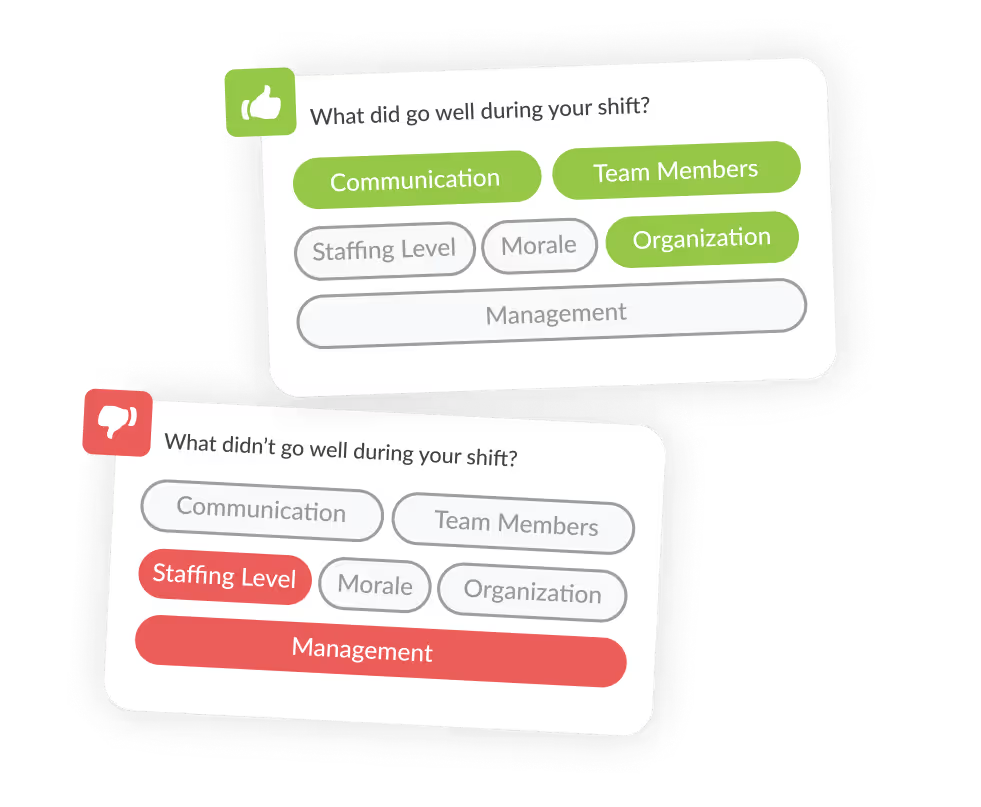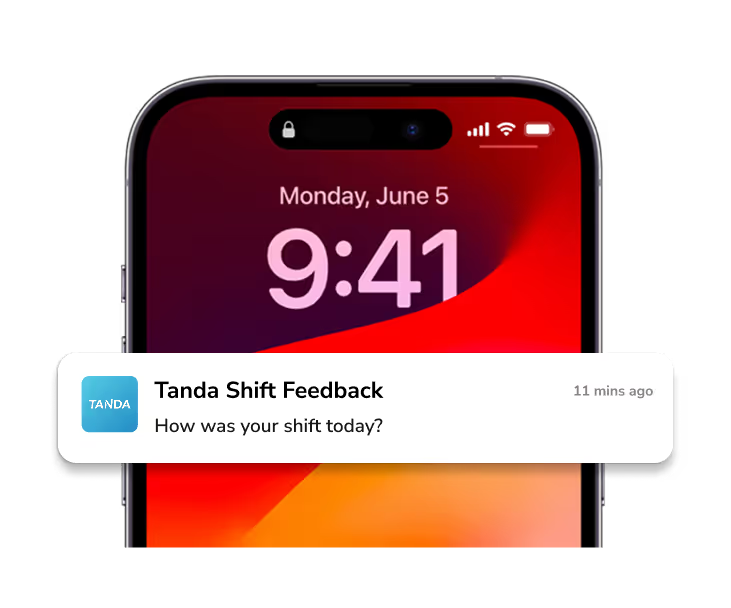Shift Feedback
Find out exactly where your business can improve with feedback directly from the frontline. Collate feedback from all of your employees instantly and make better decisions.

Receive shift feedback from your employees
Shift feedback allows employees to give actionable feedback based on a specific worked shift. Employees can choose to remain anonymous when submitting feedback on their app, or be identified.
Select what business areas you want feedback on
Identify specific actionable feedback that you can use to make improvements to operations.
Custom Feedback Topics. Get feedback from staff on the topics most relevant to your business and teams.
Pro-Active Issue Identification. Get notified of any issues from shifts or within teams with notifications delivered straight to your inbox.
Quick Resolutions. Utilise the information gathered to inform decision making and resolve issues ASAP.

Staff feedback prompts
Get a high response rate from staff by sending them a notification. Leverage feedback from frontline staff who are closest to the problems — with feedback given directly through the Tanda app at the end of their shift.

trusted by businesses great and small
.png)
.png)
.png)
.avif)
.png)
.png)
Frequently asked questions
Getting feedback from employees is crucial for understanding various aspects of your business and improving it. Collecting employee feedback can even help retain staff. Here are some key areas you might want to consider getting feedback on:
- Company Culture: How do employees perceive the company culture? Are there more opportunities to create a culture in the company?
- Communication: Are there any communication gaps within the organisation? Do employees feel they have all the information they need to perform their jobs effectively? Are you encouraging employees to share their thoughts?
- Leadership: How do employees feel about the leaders in the company? Are team members satisfied with managers? Do they feel respected and comfortable under managers?
- Work Environment: Is the physical work environment safe and accessible? Do any areas require improvement?
- Team Dynamics: How do employees feel about working with their colleagues? Do the staff perceive themselves as integral members of a team? What actions can you take to address any issues?
- Job Satisfaction: Are employees satisfied with their roles and responsibilities? Do they feel valued and recognised for their contributions?
- Training and Development: Do employees receive enough training for their role? Do they see opportunities for promotion or professional development?
- Feedback Mechanisms: How are you receiving feedback? Are employees feeling that the company values and acts upon their feedback?
- Goals and Objectives: Do employees understand the company's goals and how their work contributes to them?
- Overall Satisfaction: How satisfied are employees with their overall experience working for the company? What aspects do they appreciate? What areas can the business improve?
To retain staff, create a work environment that values, supports, and motivates employees to stay. Here's how collecting positive and negative feedback can help:
1. Regular Check-ins: Schedule regular one-on-one meetings with employees to discuss their experiences during shifts. Use this time to listen to their feedback, address any concerns they may have, and recognise their contributions.
2. Open Communication: Encourage staff to provide feedback on aspects such as workload, scheduling, team dynamics, and customer interactions. Sometimes, people feel more comfortable sharing feedback without their name. An easy way to collect this information is through digital tools like Tanda's Shift Feedback feature. With this feature, you can receive feedback in real time through the Tanda mobile app.
3. Recognise and Reward: Acknowledge and reward employees for their hard work. Recognise exceptional performance, teamwork, and positive contributions during shifts. This could be through verbal praise, professional development opportunities, or acknowledgement in performance reviews.
4. Flexible Scheduling: Whenever possible, accommodate employees' scheduling preferences. Tools like Tanda allow staff to submit leave and unavailability for managers to see when building rosters.
5. Address Issues Promptly: Take prompt action to address any issues raised by employees during shift feedback sessions. Show that you value their feedback by listening attentively, taking their concerns seriously, and working towards finding solutions.
6. Promote a Positive Company Culture: Foster a positive company culture that promotes teamwork, respect, and inclusivity. Build on good feedback and minimise anything that contributes to bad feedback.
Actively seeking and implementing feedback from team members builds a culture of job satisfaction that retains top talent.

Ready to take workforce management to the next level?
Manage your business processes in a single system, from onboarding through to payroll.
SEE TANDA